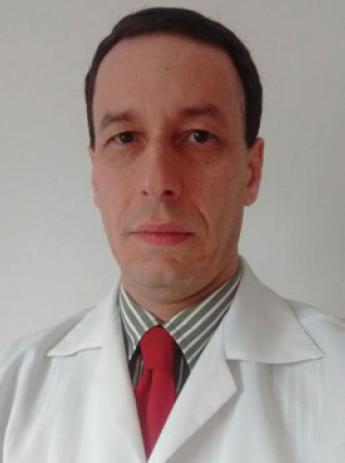Achalasia management: the South American viewpoint
Achalasia is usually quoted as a rare primary esophageal disorder with an unknown etiology.[1] This rarity leads to frequent misdiagnosis as shown by high rate of patients with achalasia referred for antireflux surgery.[2] The two affirmatives that achalasia is rare and lacks an etiology; however, may not be true in South America. In this continent, a local disease - Chagas disease or American trypanosomiasis - caused by the inoculation of a parasite through a bug bite leads to an esophagopathy almost indistinguishable from idiopathic achalasia found in other continents, as shown in the paper by Dr. Dantas in this seminar.
Chagas disease currently affects 5-18 million people and an estimated 15-20% will develop Chagasic esophagopathy.[3] More than this, autochthonous cases of Chagas disease have been reported up to Southern United States[4] and an uncountable number of immigrants carry the disease worldwide.[5] This high incidence of the disease in endemic areas brought a large experience in the management of these patients by South American gastroenterologists and surgeons. Unfortunately, most of this experience is published in local languages making it grey literature for international readers.
Despite several similarities, Chagas disease esophagopathy is characterized by massive dilatation of the esophagus a finding rare in idiopathic achalasia.[6] The treatment for non-advanced achalasia is well established and based on cardiomyotomy (surgical or recently endoscopic) or forceful dilatation of the cardia.[7] The therapy for end-stage disease is; however, controversial and the familiarity of these conditions by South American physicians may be useful. Some unconventional or long-forgotten surgical procedures are still in use in Brazil and some surgeons acquired a large experience with these techniques. Esophageal resection is also a popular choice for dilated megaesophagi.
This seminar reflects the lessons learned by different Brazilian centers highly experienced in the treatment of Chagas disease esophagopathy. Different treatment options are discussed in the light of personal experiences emphasizing aspects not frequently adopted by North American and European surgeons.[8]
Declarations
Authors’ contributionsConception and design, writing the manuscript, review of the final version: F.A.M. Herbella
Writing the manuscript, review of the final version: L.M. Del Grande
Financial support and sponsorshipNone.
Conflicts of interestThere are no conflicts of interest.
Patient consentNot applicable.
Ethics approvalNot applicable.
REFERENCES
1. Patti MG, Herbella FA. Achalasia and other esophageal motility disorders. J Gastrointest Surg 2011;15:703-7.
2. Andolfi C, Bonavina L, Kavitt RT, Konda VJ, Asti E, Patti MG. Importance of esophageal manometry and pH monitoring in the evaluation of patients with refractory gastroesophageal reflux disease: a multicenter study. J Laparoendosc Adv Surg Tech A 2016;26:548-50.
3. Stanaway JD, Roth G. The burden of Chagas disease: estimates and challenges. Glob Heart 2015;10:139-44.
4. Gorchakov R, Trosclair LP, Wozniak EJ, Feria PT, Garcia MN, Gunter SM, Murray KO. Trypanosoma cruzi infection prevalence and bloodmeal analysis in triatomine vectors of chagas disease from rural peridomestic locations in Texas, 2013-2014. J Med Entomol 2016;53:911-8.
5. Antinori S, Galimberti L, Bianco R, Grande R, Galli M, Corbellino M. Chagas disease in Europe: a review for the internist in the globalized world. Eur J Intern Med 2017; doi: 10.1016/j.ejim.2017.05.001.
6. Herbella FA, Oliveira DR, Del Grande JC. Are idiopathic and Chagasic achalasia two different diseases? Dig Dis Sci 2004;49:353-60.
7. Herbella FA, Moura EG, Patti MG. Achalasia 2016: treatment alternatives. J Laparoendosc Adv Surg Tech A 2017;27:6-11.
Cite This Article
Export citation file: BibTeX | RIS
OAE Style
Herbella FAM, Grande LMD. Achalasia management: the South American viewpoint. Mini-invasive Surg 2017;1:115-6. http://dx.doi.org/10.20517/2574-1225.2017.28
AMA Style
Herbella FAM, Grande LMD. Achalasia management: the South American viewpoint. Mini-invasive Surgery. 2017; 1: 115-6. http://dx.doi.org/10.20517/2574-1225.2017.28
Chicago/Turabian Style
Herbella, Fernando A.M., Leonardo M. Del Grande. 2017. "Achalasia management: the South American viewpoint" Mini-invasive Surgery. 1: 115-6. http://dx.doi.org/10.20517/2574-1225.2017.28
ACS Style
Herbella, FAM.; Grande LMD. Achalasia management: the South American viewpoint. Mini-invasive. Surg. 2017, 1, 115-6. http://dx.doi.org/10.20517/2574-1225.2017.28
About This Article
Copyright
Author Biographies

Data & Comments
Data

 Cite This Article 2 clicks
Cite This Article 2 clicks











Comments
Comments must be written in English. Spam, offensive content, impersonation, and private information will not be permitted. If any comment is reported and identified as inappropriate content by OAE staff, the comment will be removed without notice. If you have any queries or need any help, please contact us at support@oaepublish.com.